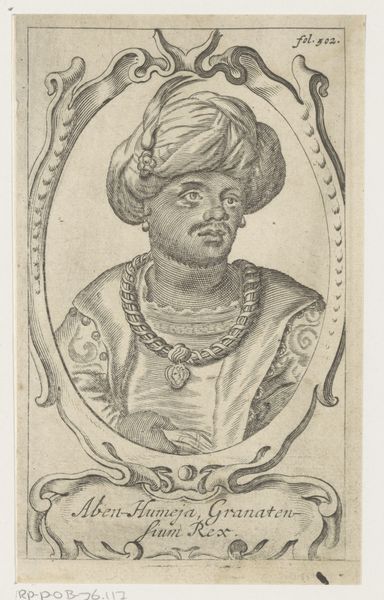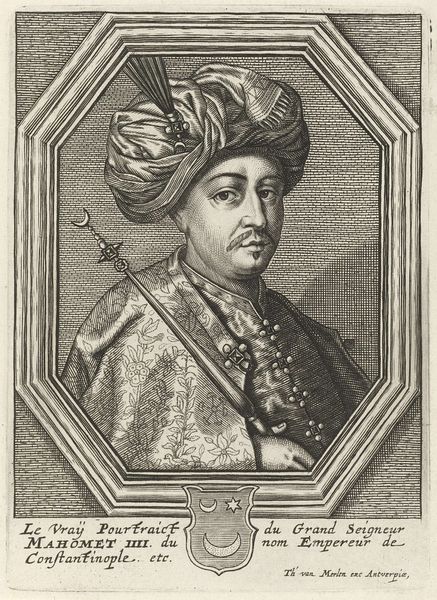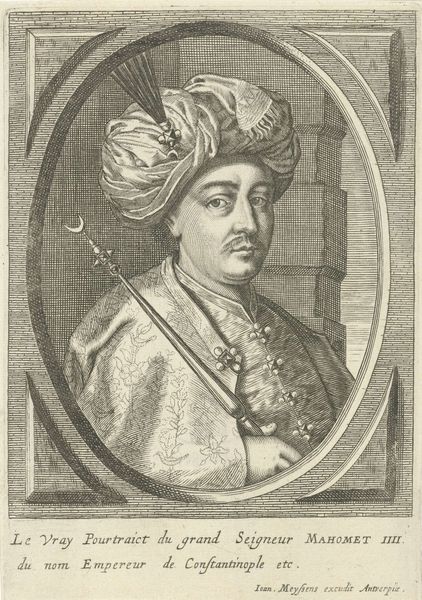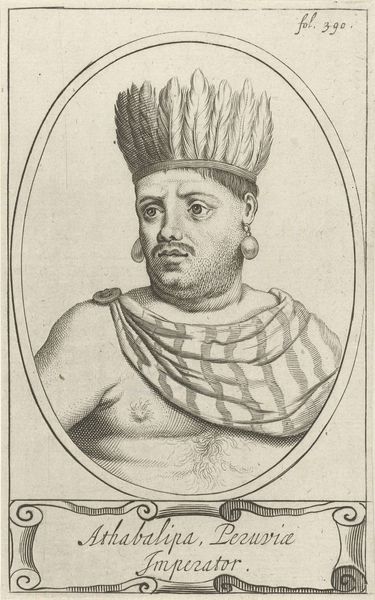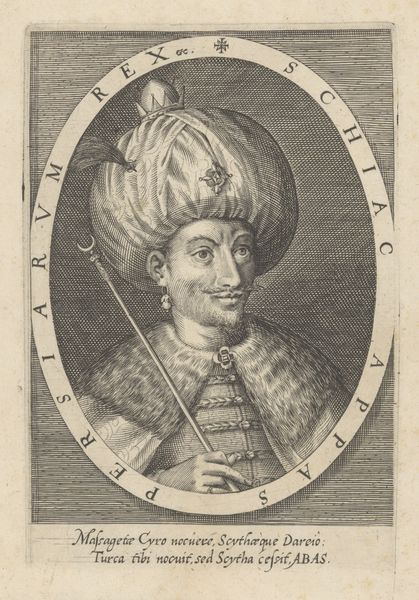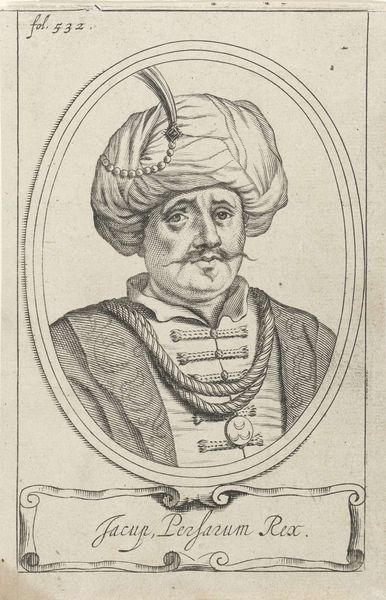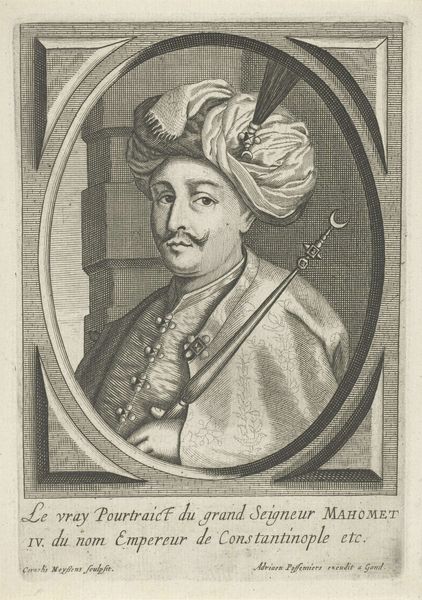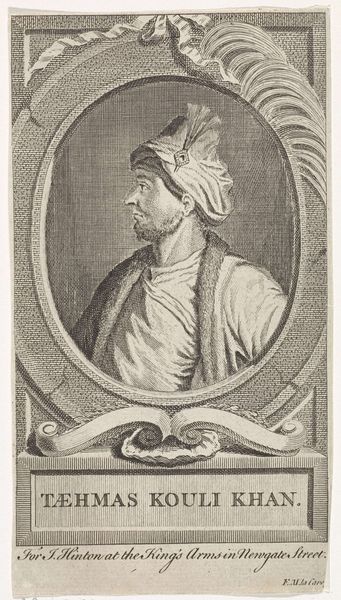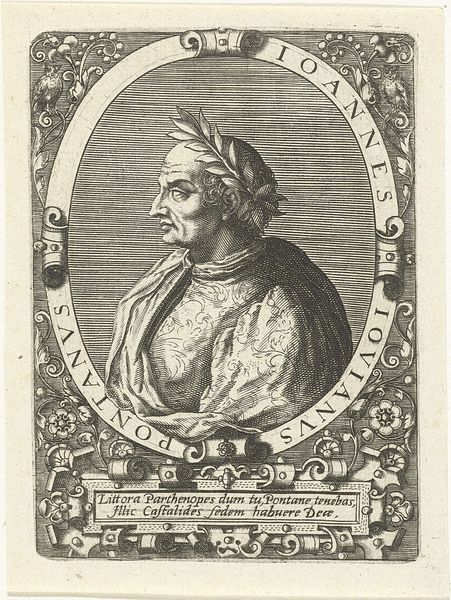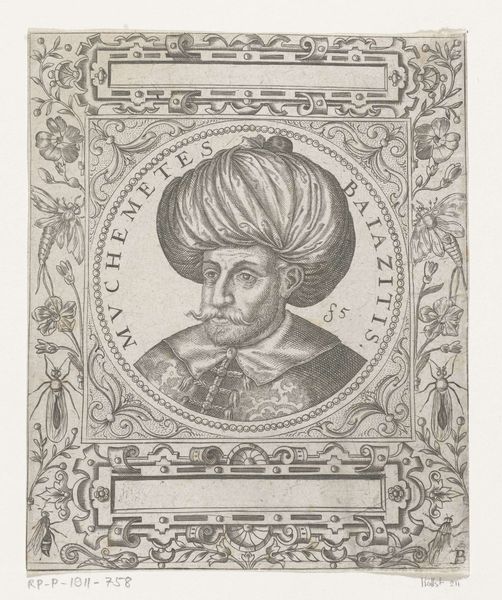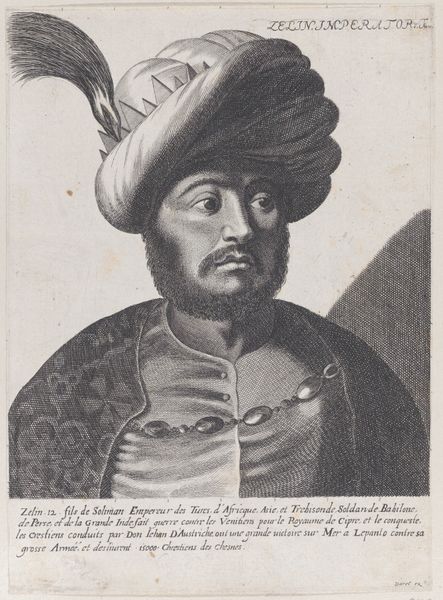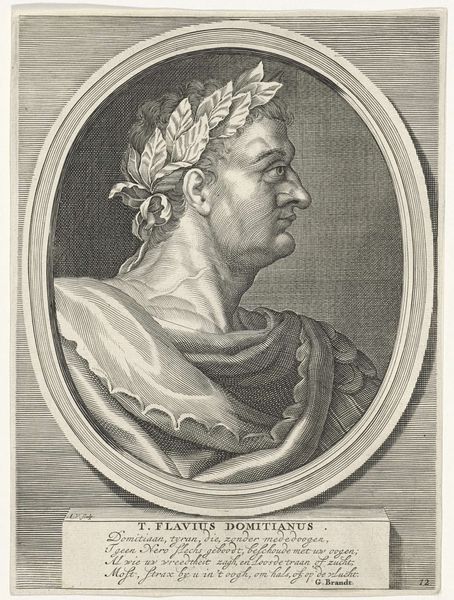
engraving
#
portrait
#
facial expression drawing
#
baroque
#
old engraving style
#
caricature
#
figuration
#
portrait reference
#
line
#
portrait drawing
#
islamic-art
#
history-painting
#
engraving
Dimensions: height 129 mm, width 81 mm
Copyright: Rijks Museum: Open Domain
Curator: The first artwork we'll explore today is "Portret van een Moorse vorst," or "Portrait of a Moorish Prince," created sometime between 1615 and 1676. The artist is Theodor Matham, and this particular piece is an engraving, currently held at the Rijksmuseum. Editor: Well, my immediate reaction is one of cool detachment. The line work is precise, but the oval framing and stark contrasts give it an almost academic distance. It's like looking at a carefully cataloged specimen. Curator: Indeed. Matham was working during a time of increased European engagement, both diplomatic and conflict-driven, with the Islamic world. These printed portraits circulated widely, contributing to a visual understanding—or misunderstanding—of foreign leaders and cultures. Aben-Humeja, as inscribed, evokes a complex historical moment: the Moorish King of Granada during the revolt against Spanish rule. The portrait becomes a tool to categorize, understand, and potentially otherize a significant historical figure in early modern Europe. Editor: From a formal point of view, the portrait is interesting in its detail, like the meticulous rendering of the turban's folds or the intricate chain and medallion. There's almost a tension between the flatness of the engraving medium and the artist’s desire to convey texture and depth, look at how lines vary in thickness! The details suggests he saw something and he tried to translate it in a mannered fashion with tools that has intrinsic limitations. The oval frame contains this richness almost like containing the exotic and unfamiliar. Curator: Precisely. The choice to portray Aben-Humeja within a formalized European portrait style, encapsulated by that oval frame, speaks volumes about the assimilation of "foreign" imagery into the dominant culture's visual language. This echoes the Baroque obsession of collecting and studying what are considered rare objects of a faraway nature. Editor: I now find that my perspective has been deeply challenged. Curator: As we consider how art frames our world, so our perception evolves. Thank you for your considerations.
Comments
No comments
Be the first to comment and join the conversation on the ultimate creative platform.
